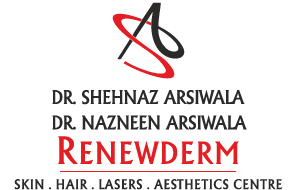Rosacea
A disorder of the pilosebaceus or oil glands Rosacea is a condition characterized by easy and persistent flushing or blushing, red pimples like boils along with pustules on the face, prominent visible blood vessels and often associated with eye symptoms. Rosacea was earlier called as ‘acne rosacea’ due to its striking similarity to acne.
Although it can affect anyone, people who are affected by rosacea are typically light-skinned, light-haired adults aged 30-50. It may be transient, recurrent or persistent.
Rosacea is a poorly understood disorder. The exact cause of which is not known
There are several theories implicating the origin of overactive facial blood vessels and inflammation in rosacea like genetic predisposition, environmental factors, vascular or circulatory and inflammatory reasons.
- A particular mite called as Demodex is found in significant proportions in hair follicles of patients with rosacea and is implicated in its causative triggers. Increased mites provoke an inflammation and allergic phenomenon in the pilosebaceus units. The skin's immune response is altered and trigger phenomenon can activate antimicrobial peptides such as cathelicidins evoking the inflammatory reaction.
- Rosacea may be aggravated by facial creams or oils, and especially by topical steroids. Abuse or prolonged use of potent topical steroids on face results steroid rosacea as the steroid makes the skin thin and fragile, increases vascularity and oil gland activity
- Rosacea may occur in those who carry the stomach bacterium, Helicobacter pylori, but there is no clear evidence on this so far.
Triggers of Rosacea
Multiple environmental and endogenous triggers are known to attenuate Rosacea
| Sun exposure | Alcohol |
| cold weather | spicy foods |
| Hot beverages | Vasodilatory medicines, which are often used to treat high blood pressure (hypertension). |
| Exposure to extreme heat | Stress |
Quality of life with rosacea:
The spectrum of presentation in rosacea may range from minor cosmetic issue to a major disfiguring condition. The persistent flushing and acne like boils on the face has an impact on the personal appearance and can cause significant psychological, social and occupational problems if left untreated.
Psychological effects of rosacea:
- Low self-confidence
- Social withdrawal.
- Hampered professional interactions
- Social embarrassment
- Decreased work productivity
- Irritability
- Depression and Suicidal tendencies
Stages Of Rosacea
Rosacea may manifest in various phases
Flushing
The first sign of rosacea is Flushing. Episodes of flushing can start with minimal trigger and can last up to five minutes, the flush usually begins on the face but can spread the neck and chest, and person may experience an unpleasant feeling of heat. History of flushing dates to childhood and early teenage life. In adult life flushing may be precipitated by hot drinks, heat, emotional upset or alcohol intake.Intially the flushing is episodic but later it is persistent.
Persistent redness
Episodes of persistent facial redness sometimes follow the episodes of flushing. This redness is like a blush, or a patch of sunburn, that does not go away in advanced stages. Rosacea is actually defined by persistent redness on central portion of the face lasting for more than 3 months.
Acne like boils
Red boils often pus filled appear commonly on cheeks and nose but may be panfacial.Unlike acne there is generally no greasiness of skin but drying and flaking. Absence of blackheads and whiteheads is a characteristic feature.
Telangectasias- Visible blood vessels
Small blood vessels in the surface of your skin can become inflamed making the skin appear blotchy. Understandably, this can be very upsetting for people with rosacea, because many people mistakenly assume that they are heavy consumers of alcohol. The above primary features when present are diagnostic of rosacea.
Stages Of Rosacea
Facial burning or stinging Dry and rough skin. Patch red skin. Facial swelling. Thickened skin In advanced stages the skin can thicken and form excess tissue, usually around the nose. This makes the nose to take on a large, bulbous appearance – also termed as ‘rhinophyma’.
Rhinophyma is a rare symptom of rosacea and more common in men than women,
Eye involvement- the irritation can often lead to related eye conditions, such as, conjunctivitis, blepharitis and eyelid edema.
The primary and secondary symptoms of rosacea often vary from person to person and, in the majority of cases, one may only experience some, rather than all, of the possible symptoms.
Treatment
There is no cure for rosacea.
DISLAIMER:
THE INFORMATION IN THIS ARTICLE REFLECTS THE VIEWS OF THE AUTHOR ONLY. A QUALIFIED HEALTH CARE PROFESSIONAL SHOULD BE CONSULTED BEFORE USING ANY THERAPEUTIC PRODUCT DISCUSSED. ALL READERS SHOULD VERIFY ALL INFORMATION AND DATA BEFORE TREATING PATIENTS OR UTILIZING ANY THERAPIES NOTED IN THIS PROGRAMME.
